January 7-13, 2024
Bitterly cold

This week was a triple whammy with snowstorms, howling winds that lasted for hours, and then days of negative temperatures far below zero.

Week in Review
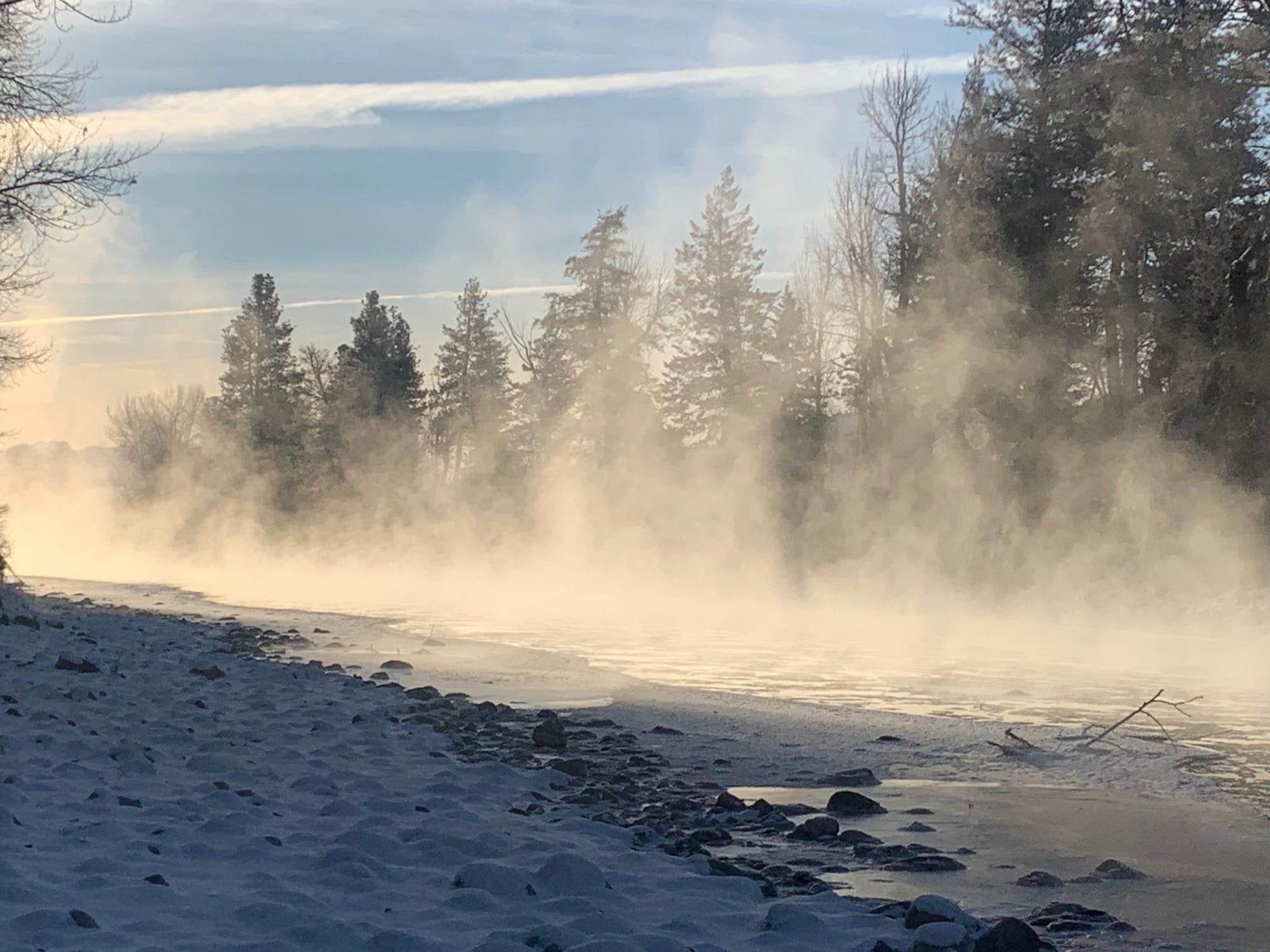
Surprisingly, despite the plunging temperatures, this has been a relatively busy week for wildlife.
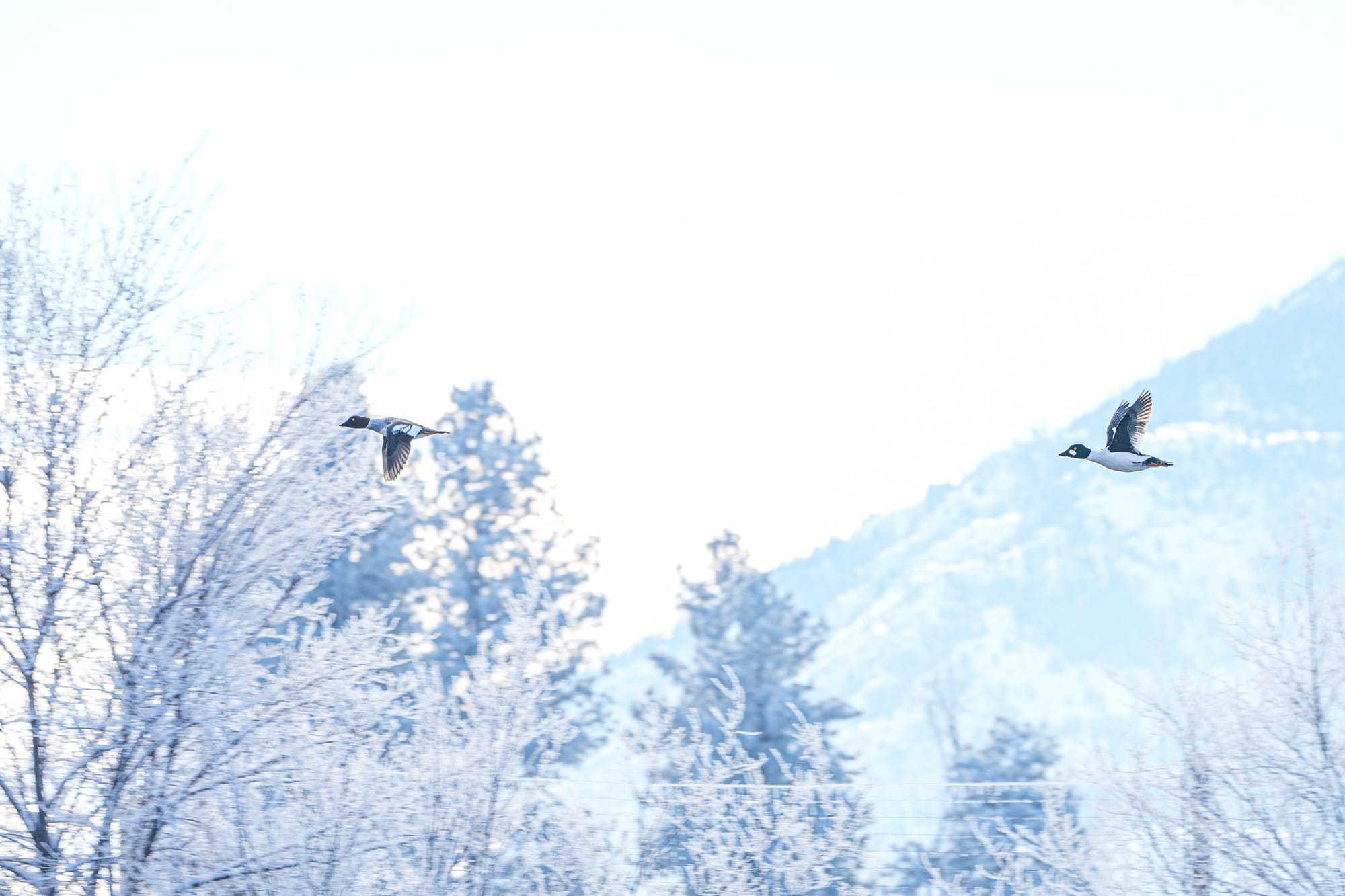

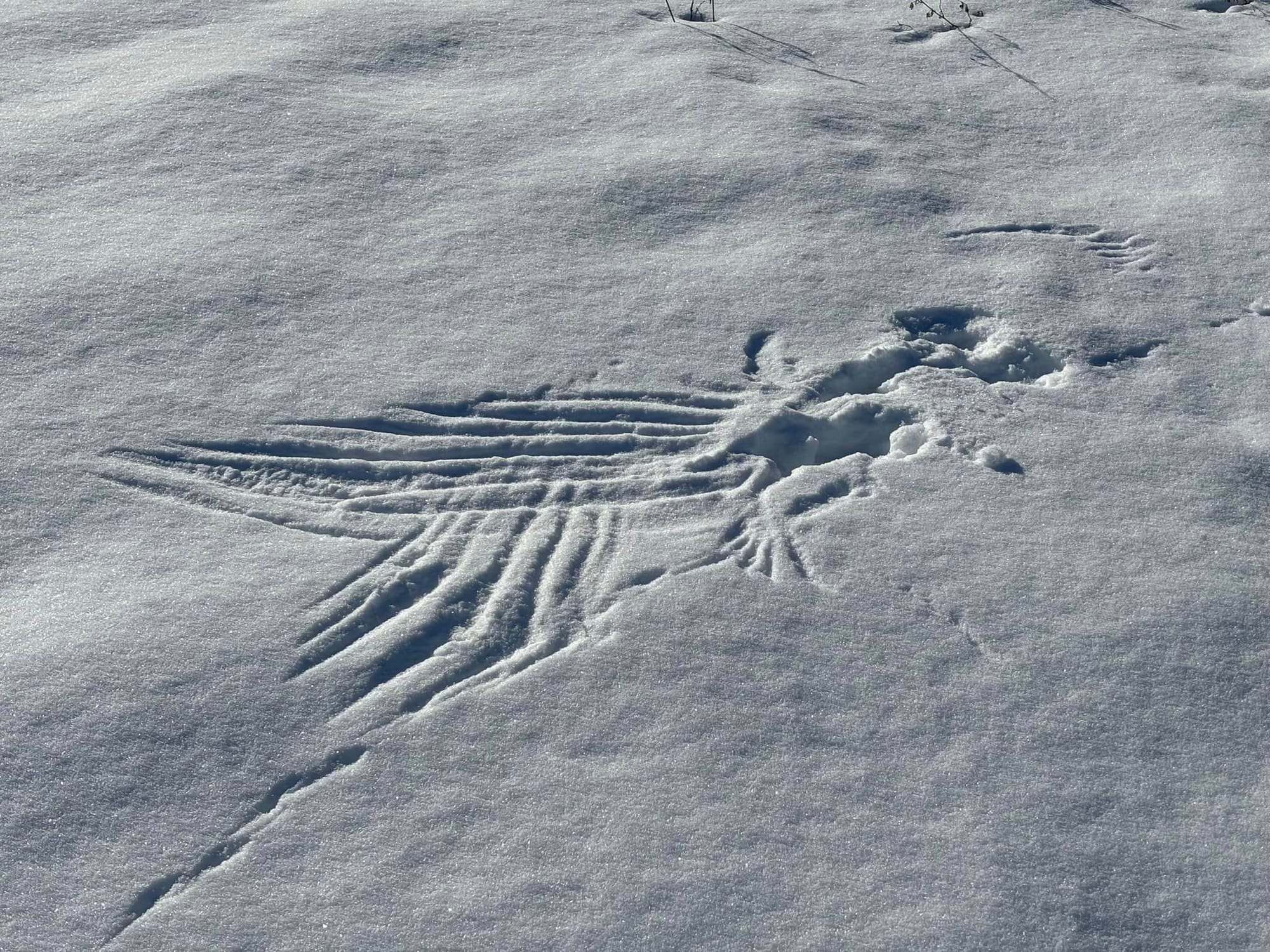
A story in tracks: The moment a small, running animal was captured by a bird of prey! Photos by Elizabeth Hastorf
Even as I sit and write this, I am looking at a perched bald eagle, a large group of very active birds at our feeder, and a herd of deer wandering through the yard—it feels like a lot of activity after days and weeks when very little happened at all!
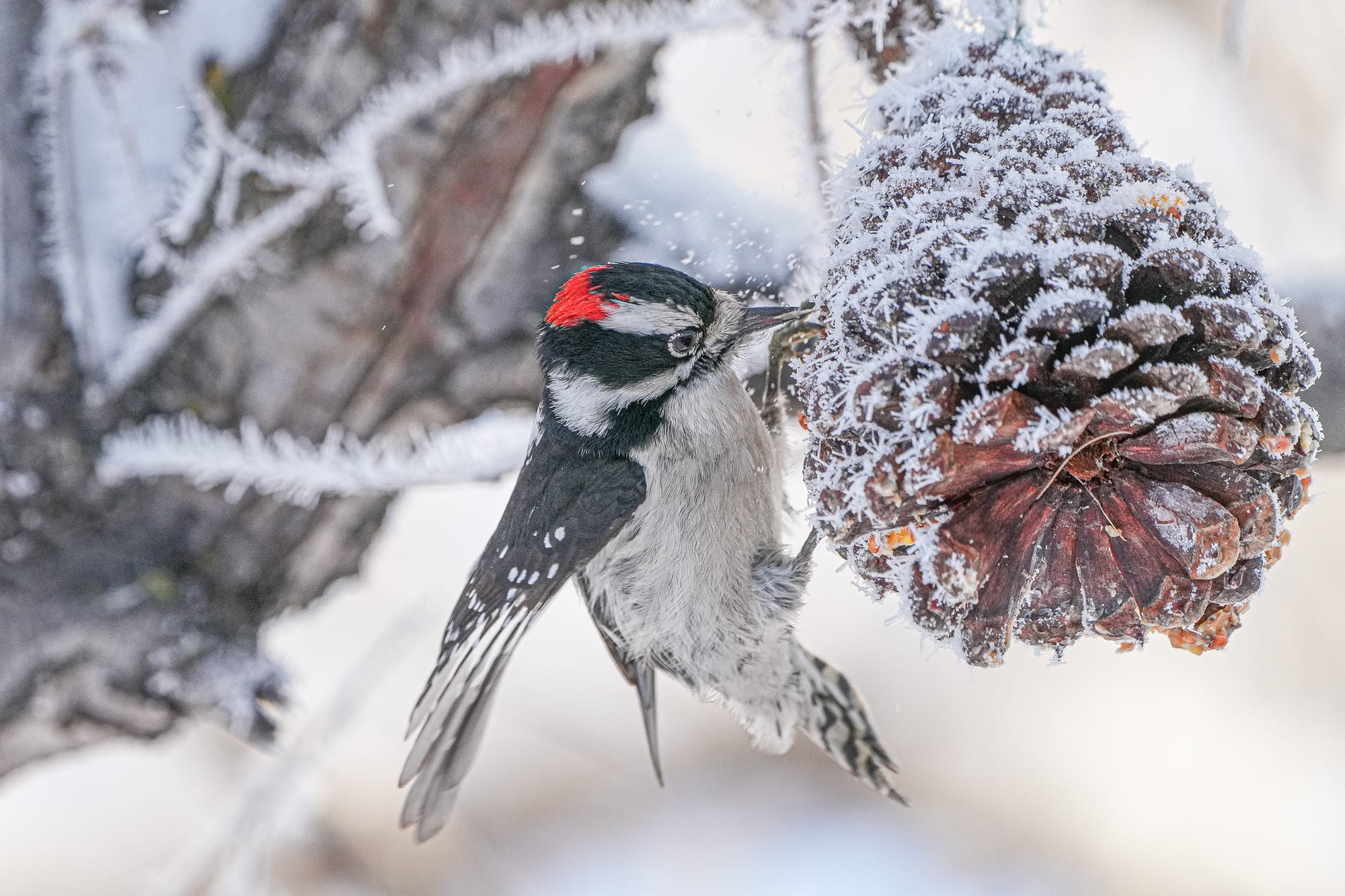
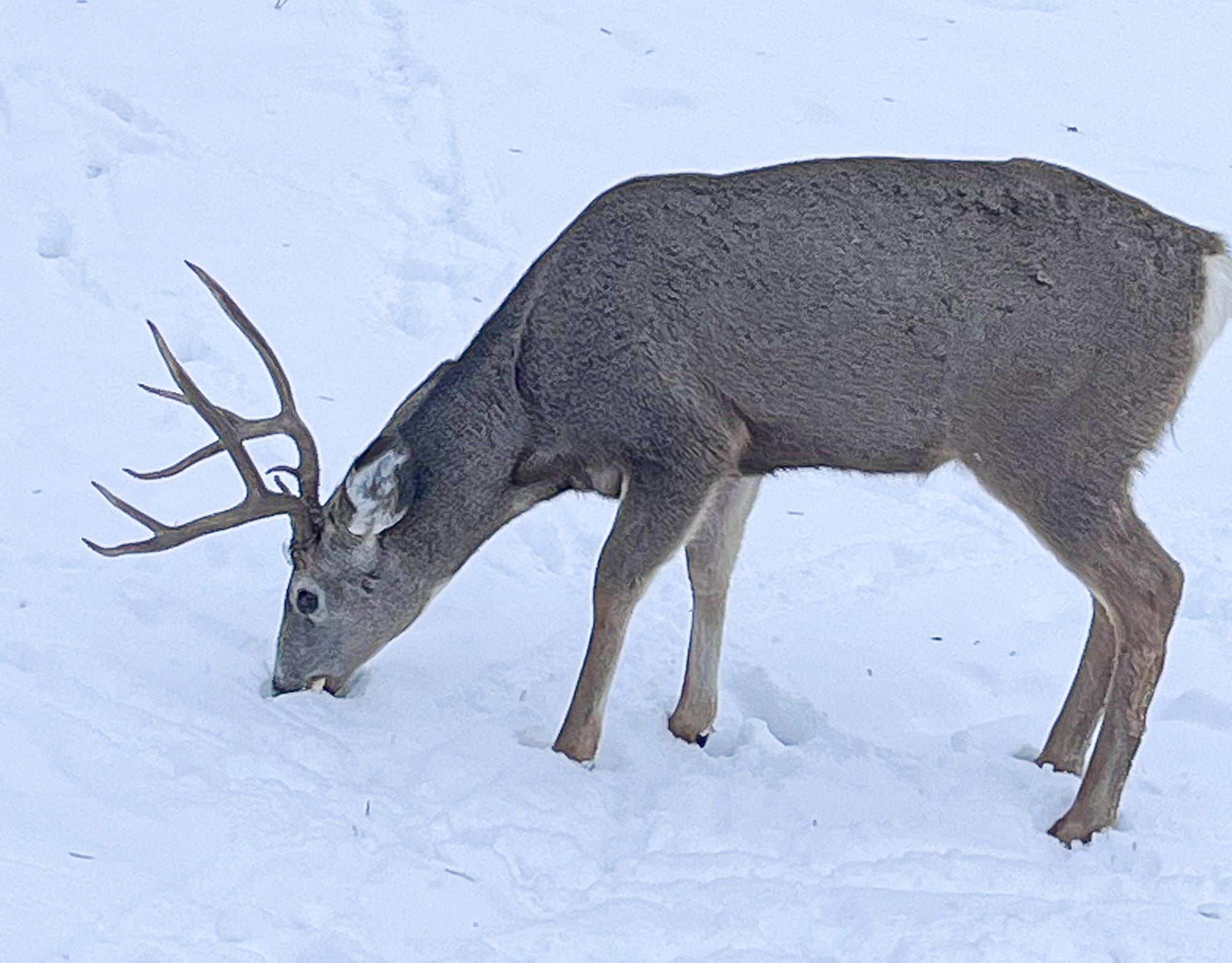
It's possible that the combination of clear, sunny days and deep cold brings animals out in search of food, but there are other forces also at work. One force is that cold weather might be pushing northern birds south. These are the conditions when we should start looking for unusual visitors like rough-legged hawks, snow buntings, and (very, very rarely) exceptional birds like hawk owls.
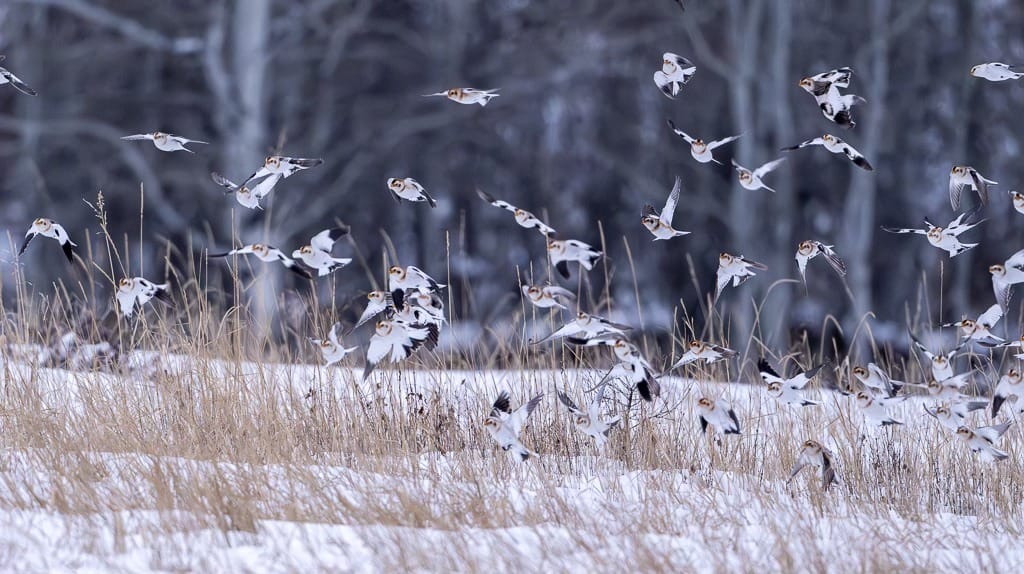
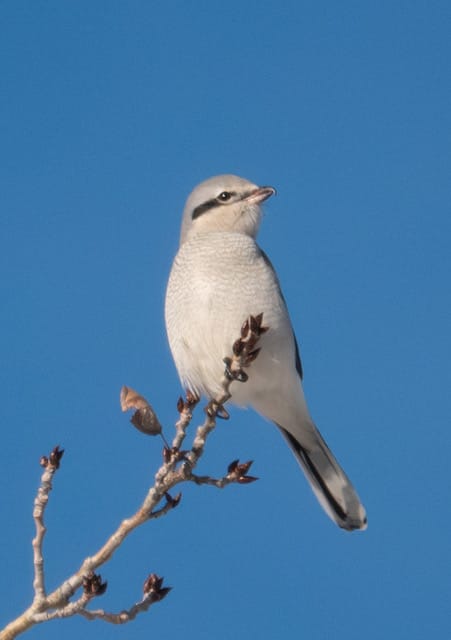
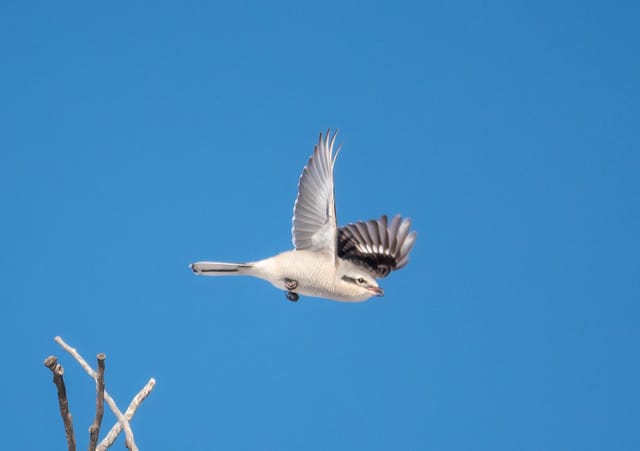
Northern shrikes are common northern birds that spend winters here. Photos by Pat Leigh
Another force that some animals might be feeling is the urge to mate. Great horned owls, for instance, are already loudly hooting and beginning to nest. Gray jays in the high mountains might already be nesting, and some coyotes are in heat.
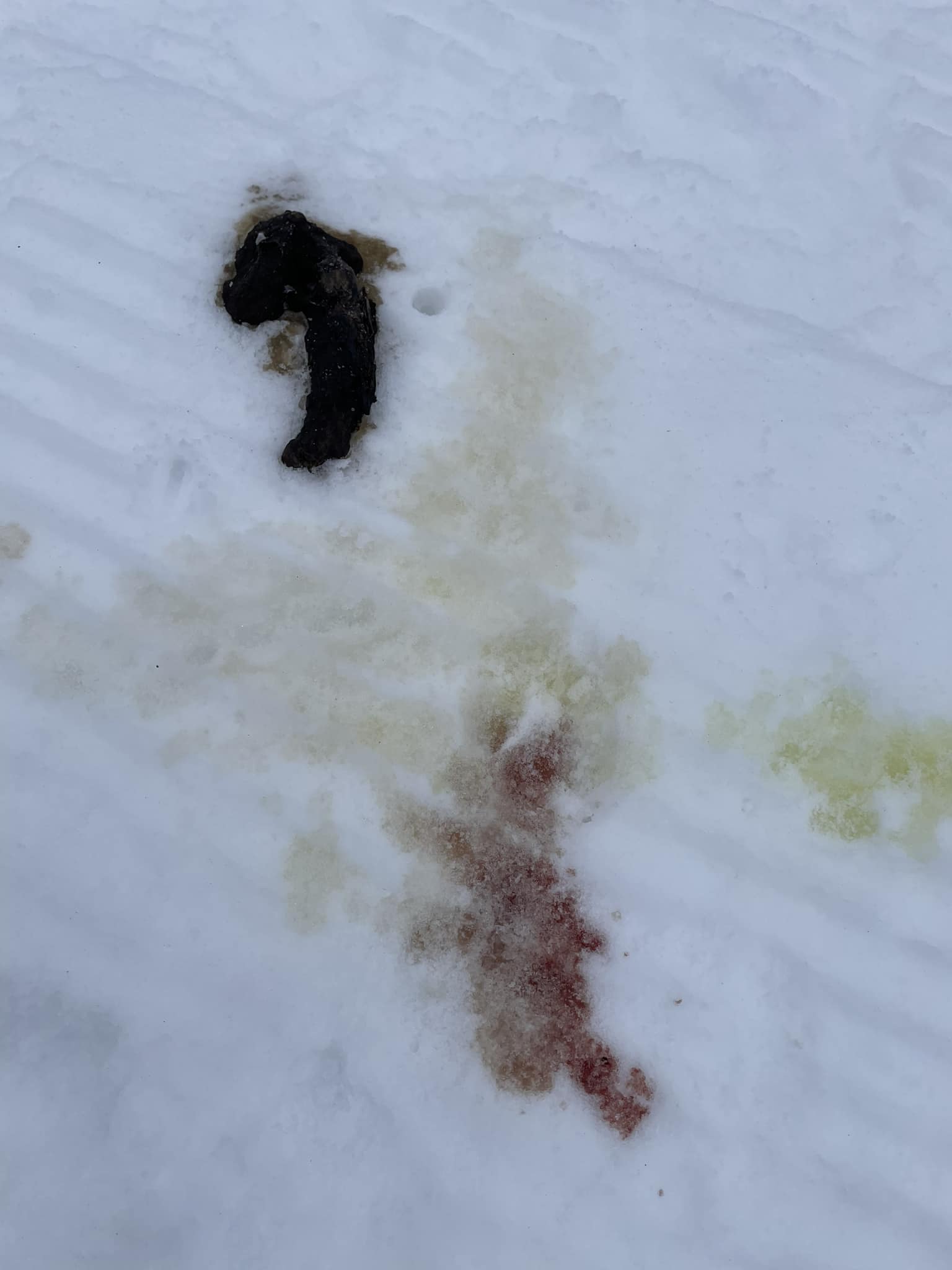
Another factor at work is that, until a week ago, our winter has been remarkably mild. There were even reports of western bluebirds, and other birds, starting to check out nestboxes. Bluebirds eat insects, so they should have migrated south by now, but there's also been a spotted sandpiper hanging out along the river and they should be gone as well.
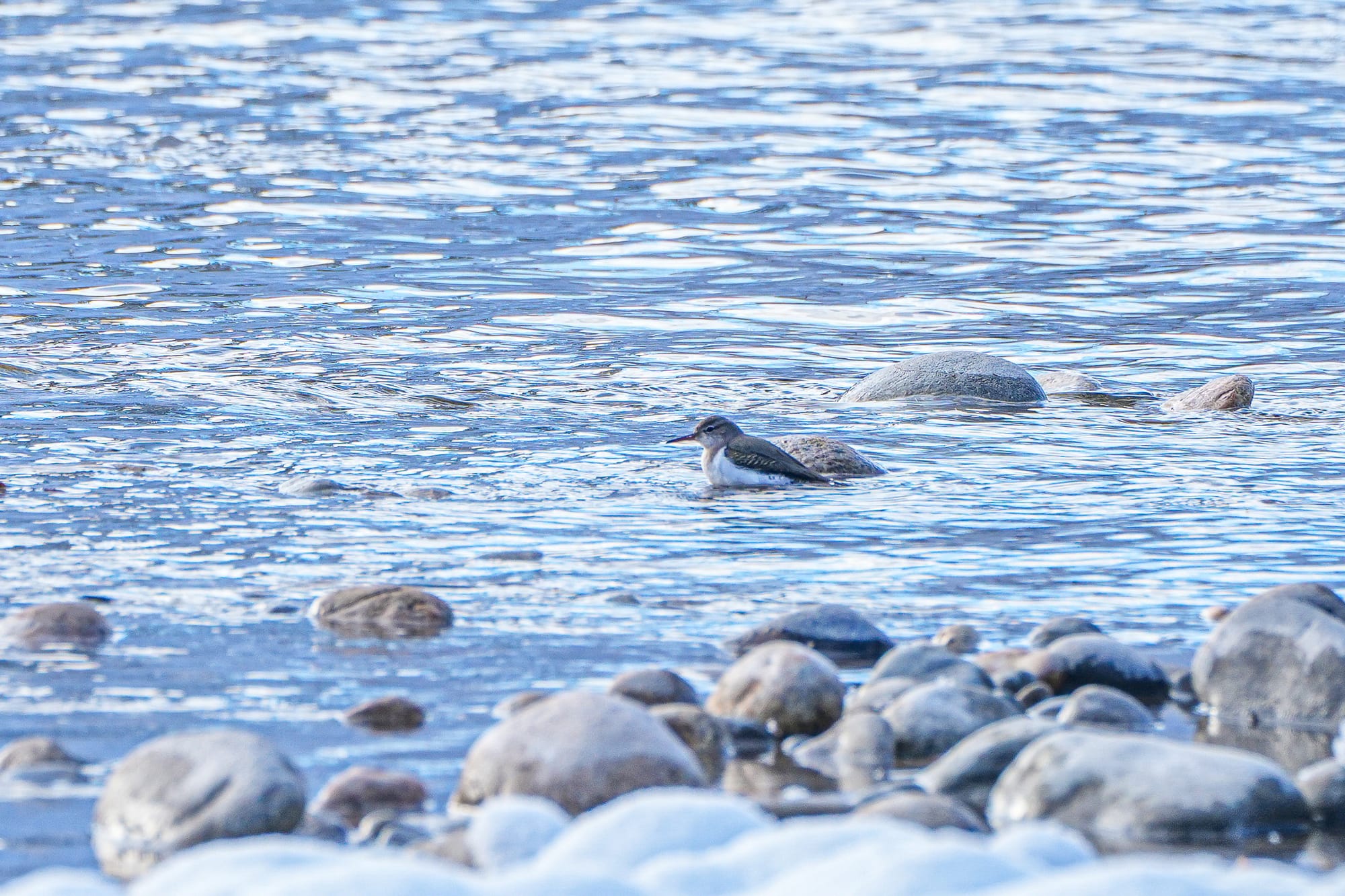
Observation of the Week: Great Blue Heron
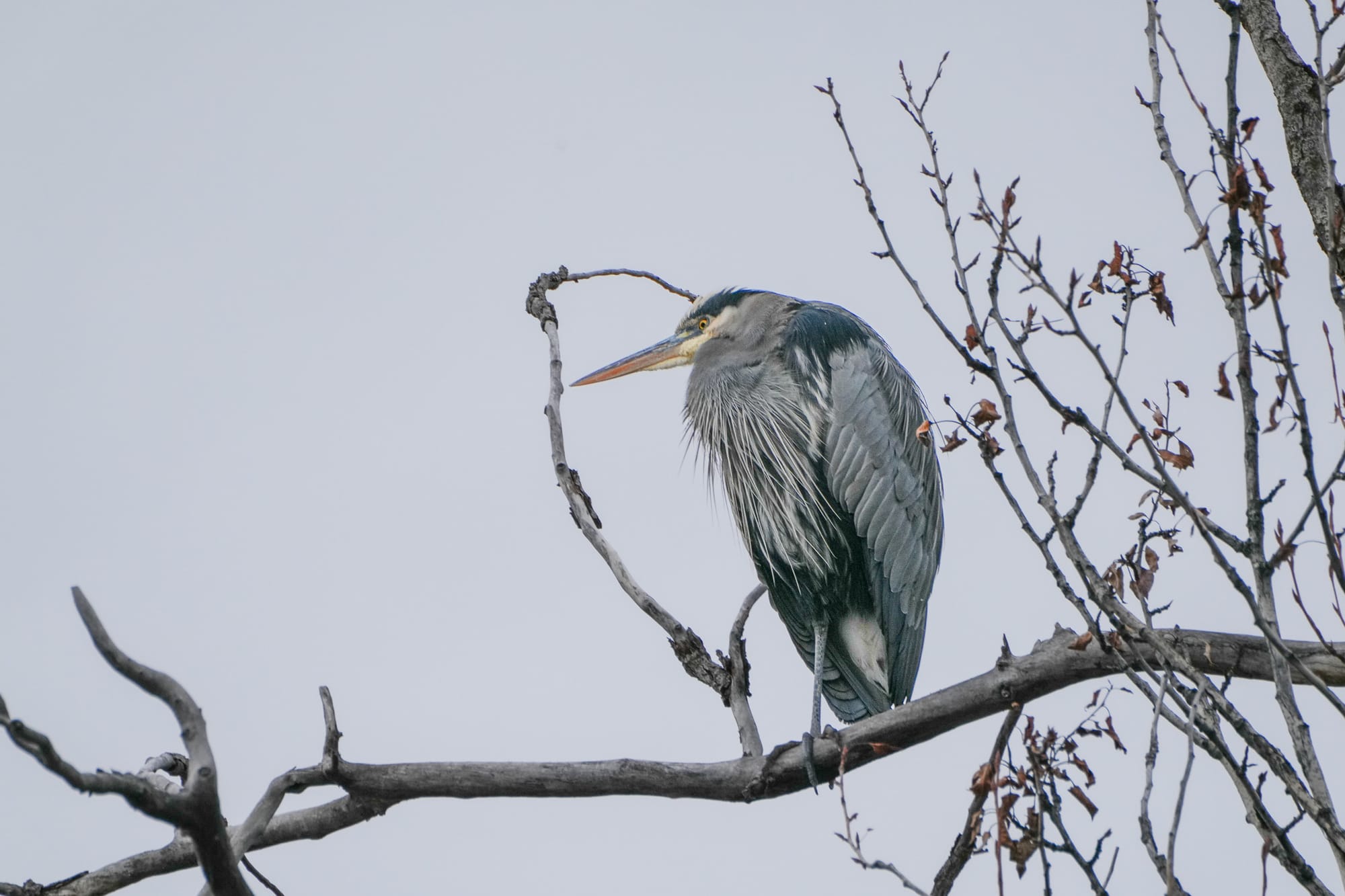
It's surprising to see great blue herons in the Methow Valley at this time of year. These tall, gangly birds don't do well in icy conditions because their big feet and long legs can't easily grip or stand on ice, plus they are unable to catch fish if there's even the thinnest layer of ice covering the water.
So far this winter we've had mild conditions, and much of the river shoreline has remained accessible, so there have been a few herons hanging around. This might change now that the river is freezing up, and it will be interesting to watch how the herons respond.
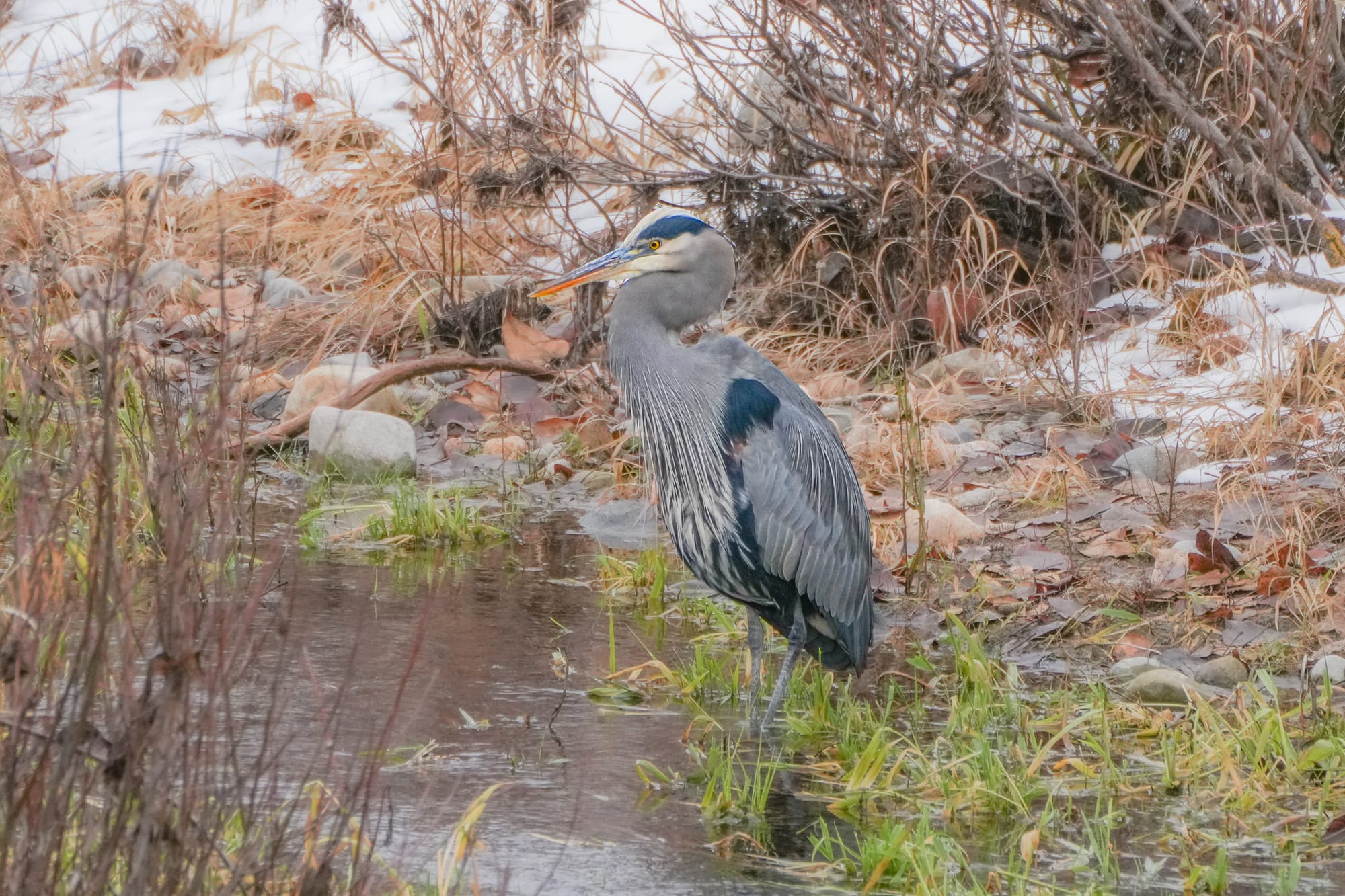
In general, the great blue herons of the Methow Valley follow a predictable pattern. They generally nest at lower elevations—with nesting colonies near Brewster, Omak Lake, and at scattered locations in the Okanogan Valley—and then, after the breeding season, young birds and nonbreeding adults wander upstream and northward towards British Columbia.
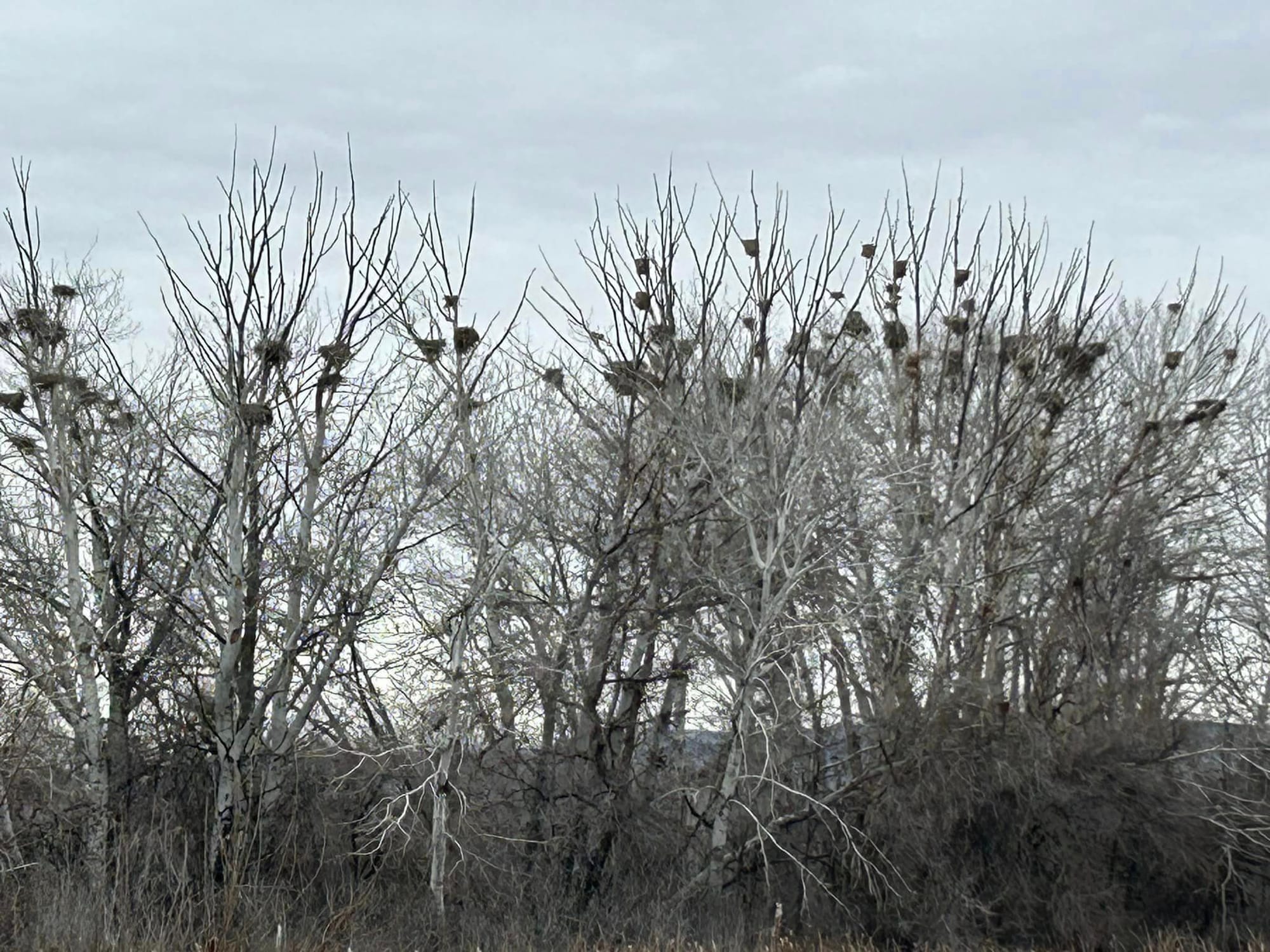
These birds should start arriving in the Methow Valley in July and then linger until winter ice pushes them back down the valley in search of warmer, ice-free waters. However, at the same time, it's possible that some individuals spend the entire year, and maybe even nest, in the Valley itself.
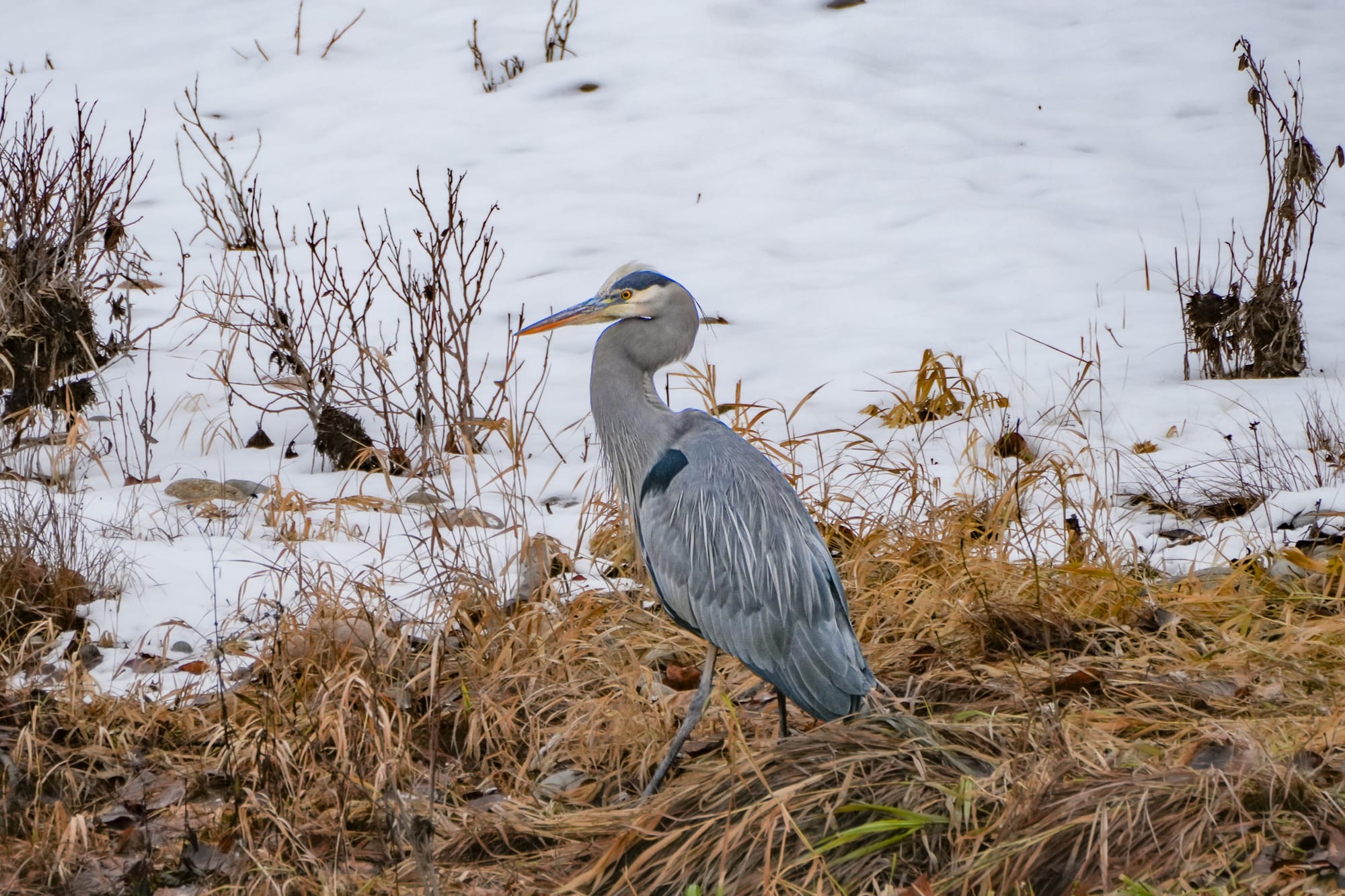
I tend to take great blue herons for granted because I've seen so many in my life, but, now that I started noticing the herons this winter, I want to pay more attention in the summer and see what they're doing there.
